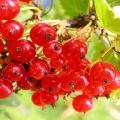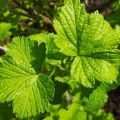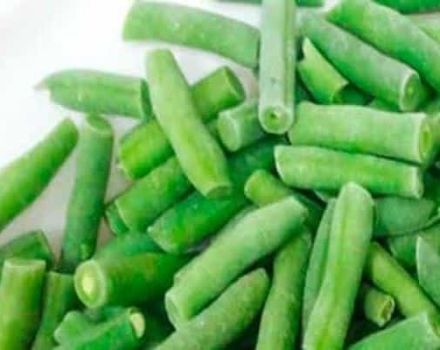How to make props and fences with your own hands for currant garters
Almost all gardeners and summer residents are engaged in the cultivation of currants. 3-4 years after planting currant seedlings, tying is necessary. Before that, you need to familiarize yourself with how to properly tie up the currants.
Content
- 1 Why is it necessary to tie up currants?
- 2 Advantages and disadvantages of strengthening bushes
- 3 When currants are tied up
- 4 What materials and devices are used for fastening
- 5 Ways to strengthen currant bushes with your own hands
- 6 Nuances of garters for winter shelter
- 7 How to properly enclose a currant garden
- 8 The main mistakes gardeners make when tying currants
- 9 Conclusion
Why is it necessary to tie up currants?
It is recommended to understand in advance the main reasons for the garter of currant bushes to the supports.
A few years after planting, black currant bushes begin to grow strongly. The lower branches of the plant begin to touch the ground surface. Due to constant contact with the soil, the currants develop viral and fungal diseases that negatively affect the yield. To prevent the branches from touching the ground, they are tied to the support posts.
Another reason for tying bushes is to accelerate the ripening of berries. Tied berries are better illuminated by the sun, which speeds up the ripening process by 2-3 times. Also tying up prevents the bush from growing too much in breadth.
Advantages and disadvantages of strengthening bushes
The bush garter has some advantages and disadvantages that you need to familiarize yourself with in advance. The main advantages include the following:
- Protection against the appearance of fungal diseases, the pathogens of which are in the upper layers of the soil. Even careful pinching of bushes does not protect them from contact with the soil. The most effective way to eliminate contact of currants with the ground is a garter. Bushes tied to supports get sick several times less often.
- Simplified access to berries. Harvesting from untied shrubs is not easy. Tied branches do not bend to the ground and therefore picking ripe berries is much easier.
- Wind protection. It's no secret that currant branches can break due to gusts of wind. If you tie a bush to a support, its branches will not break even in strong winds.
The only serious drawback of growing tied currants is that you need to spend a lot of time creating and installing a support.

When currants are tied up
People who plan to tie the planted berries are interested in when to tie the branches of the bush to the supports.
Experienced gardeners recommend tying the planted berries to the supporting elements 3-5 years after planting the seedlings. During this period, the bushes grow up to one and a half meters, and their lower branches, under the weight of ripe berries, begin to reach the ground. You don't need to do a garter earlier, as it makes no sense.
The currant support can be installed both in spring and autumn. If you do this in the fall, it is best to finish everything before mid-October. In the spring, the garter is carried out at the end of April and in the first days of May, when the ground warms up well.

What materials and devices are used for fastening
It is recommended to figure out in advance what devices with materials will be needed to make mounts for supports for currant bushes.
Clothespins and clips for fastening
Quite often, plastic clips or clothespins are used to tie up vegetable and garden crops. The appearance of such devices resembles ordinary clothespins, which are used when hanging the washed laundry.
The main advantage of the clips is that they can be reused. The disadvantages include the small size of the devices, because of which they are used only when attaching branches to thin supports.
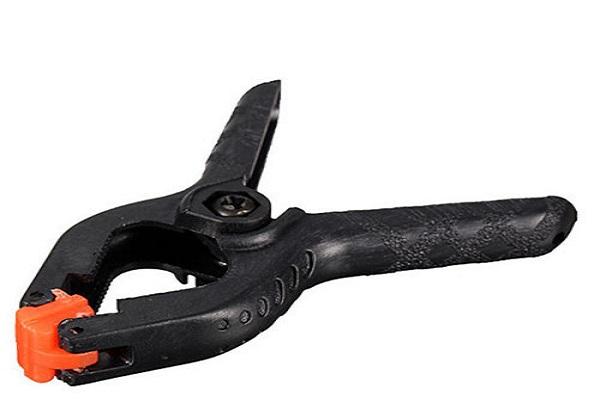
Garden straps
Many gardeners consider garden straps to be the most convenient currant attachment. They are equipped with special fasteners that allow the straps to be tightened on supports of any diameter.
Items such as clips with clothespins can be reused over the years.
Ways to strengthen currant bushes with your own hands
There are several ways to garter currant bushes, the features of which should be familiarized.
Installation of supports and garters on trellises
Many gardeners who grow berries use trellises. Before attaching the bushes to the trellis, a special frame must be made. To do this, pegs are driven in at the ends of each row with berries, between which a dense rope is fixed. It is to her that the branches will be tied.
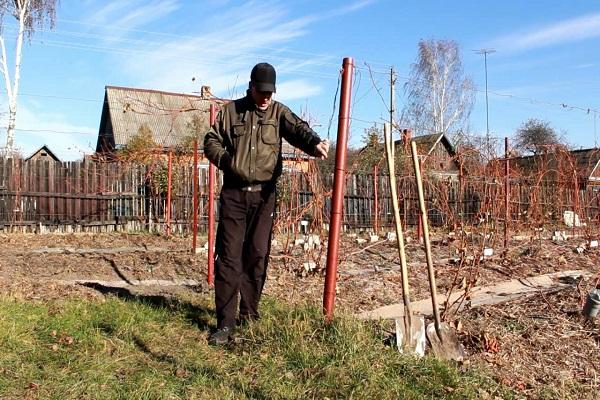
This method is very convenient, as it allows, if necessary, to add several upper ropes, to which you can tie the upper stems of the currants.
On a single frame
Sometimes currant bushes are not planted next to each other, but separately. In this case, it is better to tie the plants up to a single frame made of stakes.
To build such a structure, four pegs are placed around the plant, which form a square. The installed tubes are connected by horizontally installed boards, to which the lower branches are attached.
On a pipe support
Some gardeners make a frame of PVC pipes. They are dug in near the currants in such a way that a circle is formed. Then, between each pipe, a rope is pulled in several rows at a distance of 50-60 centimeters.
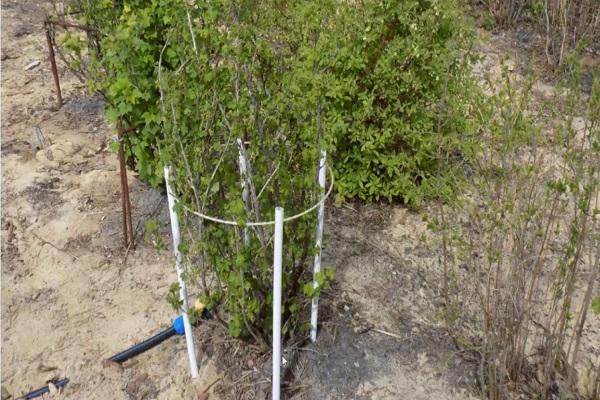
On a triangular support
A triangular stand for currant bushes is popular among gardeners. When using such a support, three strong pegs will have to be installed around the plant. They are installed so that they get an equilateral triangle.
On the trunk
To grow currants using the standard method, immediately after planting, you must tie the seedling to a single pole. In the process of growth, all excess shoots that have grown in the lower part of the bush are removed from the plant. In this case, the upper shoots are not touched.

Nuances of garters for winter shelter
Some people think that tying is done only to speed up ripening and to simplify the care of currants, but this is not so. The garter is carried out to insulate the planted plant and protect it from winter frosts.
For this, a frame insulating metal support is created. 3-4 pipes with a height of one and a half meters are installed around the bush. From above it is covered with a covering material. It is necessary to cover the bush very carefully so that there are no cracks through which cold air could enter.
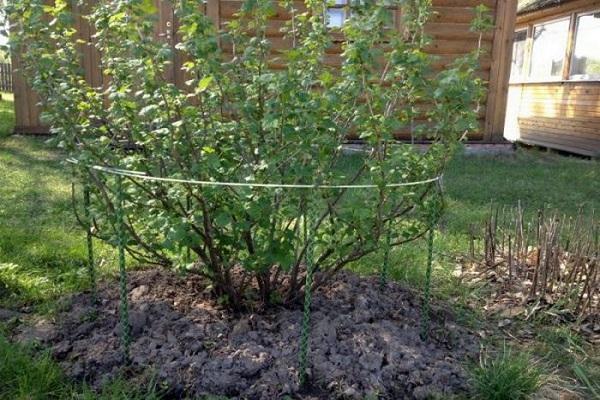
How to properly enclose a currant garden
Often, gardeners with their own hands create special fences for currants. They are made not only for decorative garden decoration, but also for additional protection of currant seedlings from animals.
The easiest way is to enclose the bushes with wooden props. To do this, a main support is installed near the currant, to which the main stem is tied. Then a wooden fence is made around the bush from small boards 90-120 centimeters high. The installed fence is recommended to be varnished or painted so that it does not start to rot prematurely.

The main mistakes gardeners make when tying currants
People who make supports from scrap materials and tie currant bushes to them often make mistakes. The most common mistakes include:
- The use of substandard materials. Sometimes people save on materials when constructing a support structure, which is why it quickly breaks down.
- Choosing the wrong garter belt. Do not use natural fabrics that can damage the shoots.
- Drag and drop attached branches. Sometimes gardeners tie currant twigs too tight. This not only slows down its development, but also leads to drying of the branch.
- One-time garter. Experts recommend regularly tying currants as they grow.
Conclusion
When growing currants in the garden, you will have to tie it up to supporting structures. In order to properly tie the bushes, you need to understand the timing of the procedure, choose the right materials and familiarize yourself with the main methods of strengthening the planted berries.





